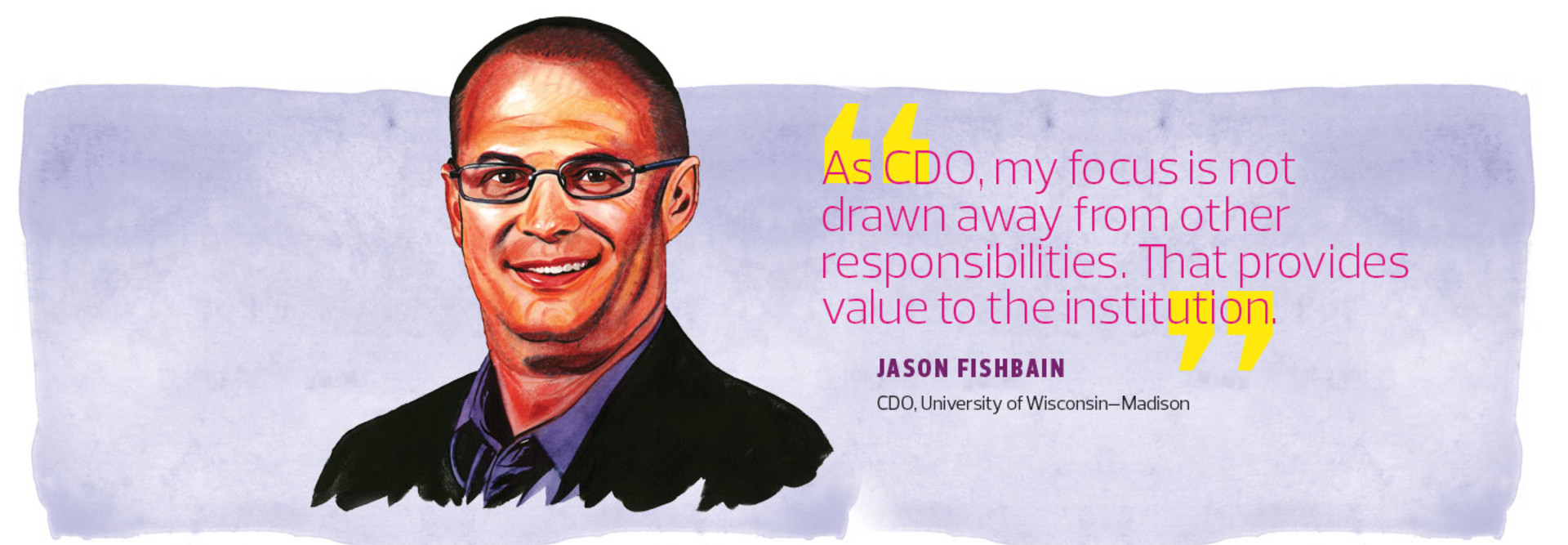The New Frontier: Jason Fishbain on Personalizing the Student Experience
EDTECH: What is the state of analytics today in higher education?
JASON FISHBAIN: There’s a lot of focus around schools using different data sources to predict student success. One example is: How can we help our students graduate within four years? There’s movement around integrating demographic data with how students interact with the online digital classroom. I think higher education institutions are just getting their feet wet in that area.
EDTECH: What are the opportunities in this area?
FISHBAIN: One thing that is technically possible is that we can start to personalize the student experience. The next generation of students grew up with personalized experiences, interacting with Netflix and Amazon, for example. I think some students expect it. Universities that are not able to provide that at some level could be at a competitive disadvantage.
At Madison, we’ve talked about students logging into the My UW portal, and the context displayed on the portal can change based on their preferences. You’ve been admitted to the School of Business; here’s what others in the school are interested in. You tell us what you like, and here’s some social clubs and community events. The caveat to this is privacy. Because we’re talking about student data, that’s a more hot-button topic than in other industries. That has to be factored in.
EDTECH: What is the analytics strategy at your institution?
FISHBAIN: We certainly want to have high four-year graduation rates for our university, but ours is pretty good already. Our focus is more around academic and course planning. Strategy-wise, we have a very distributed environment, and we are actively in conversation about whether that’s the right approach. Part of the strategy is setting up an infrastructure where we can provide both the typical institutional metrics people need, while providing the ability for people to do their own analyses.
We’ve just implemented Tableau visualization software. We formed our own UW-Madison Tableau users group, so there’s a lot of excitement around that. We have about eight or nine departments across campus in our community, including academic planning, the institutional research group, the registrar’s office and facilities. Our facilities department just mashed the campus map with student data from the registrar’s office and built a visualization that they’ve shared with emergency management and the police. If something happens, we know how many students are in a certain radius of such-and-such building. Folks think it’s really cool and started generating other ideas off it.
EDTECH: How would you describe your role on campus?
FISHBAIN: My role is to oversee all aspects of data management and governance. I’ve been here two years, and getting data governance off the ground was the very first thing we had to do to have a baseline from which to work. We now have an effective structure and we’re starting to get to the next stages: data definitions and educating our users.
The goal is that everyone understands the definitions being used, so the chancellor doesn’t ask, “How come I got a different number from this other person here?”
In the meantime, we have a robust student data warehouse that users across campus are using. Sometimes they don’t necessarily understand 100 percent what it is they are accessing. In other cases, they get it and produce some really good results.
EDTECH: What are best practices for moving toward a data-driven decision-making model?
FISHBAIN: If you are going to be a successful analytics organization and make decisions effectively, you have to have data governance at the base of it.
EDTECH: What are the challenges of implementing an analytics program?
FISHBAIN: Funding. We are a public institution, and our state government has decided that our budget needs to be cut, so trying to fund a new initiative is difficult. The nice thing about UW-Madison is that everyone is a big believer in shared governance. Folks want to be involved and participate because they believe there is value.
EDTECH: From a technical perspective, what are the biggest hurdles to gathering and leveraging data from multiple systems?
FISHBAIN: When you start dealing with third-party systems that are hosting or running your transactional systems, integrating data is a challenge. This is where I think a lot of resources should be focused: the integration of data from multiple systems.
We have both our student warehouse, where we “Extract, Transform and Load” data in, and a bus architecture for getting data out of our transactional systems. Our CIO is highly engaged and supportive.
We’re trying to integrate anything that’s been connected in our student information system — demographics, admissions, class schedules and financial aid — all of that is in there. We’ve integrated a little bit of HR as well. Our financial systems are shared across the UW system. So there’s the HR data warehouse and the shared financial data warehouse controlled by UW, which we consume.
EDTECH: How should colleges evaluate whether they need a CDO or equivalent?
FISHBAIN: A CDO builds a strategy around managing your data environment in order to produce analytics. That function needs to happen, whether it’s a CDO or someone else in the organization. Having a full-time resource dedicated to making that happen makes it go faster. Can it be done without one? Of course it can. In certain institutions, that’s the way to do it. As CDO, my focus is not drawn away from other responsibilities. That provides value to the institution.
EDTECH: How does a CDO or equivalent complement other IT or strategic roles on campus?
FISHBAIN: I don’t think a CDO is an IT function. I report to the CIO only because he had the full-time equivalent available and was a champion of having a CDO. I think in the near future, I may not be under the CIO. In my mind, the CDO is managing the institutional assets of data, and while there is an IT component to that, it’s much more of an academic or business component.
I partner with our CISO around policies involving access, and I partner with IT folks around data integration, but that’s all driven by what the administration and the academic side are saying are the requirements for doing it.
Part of The New Frontier series of interviews with top data experts in higher education.









